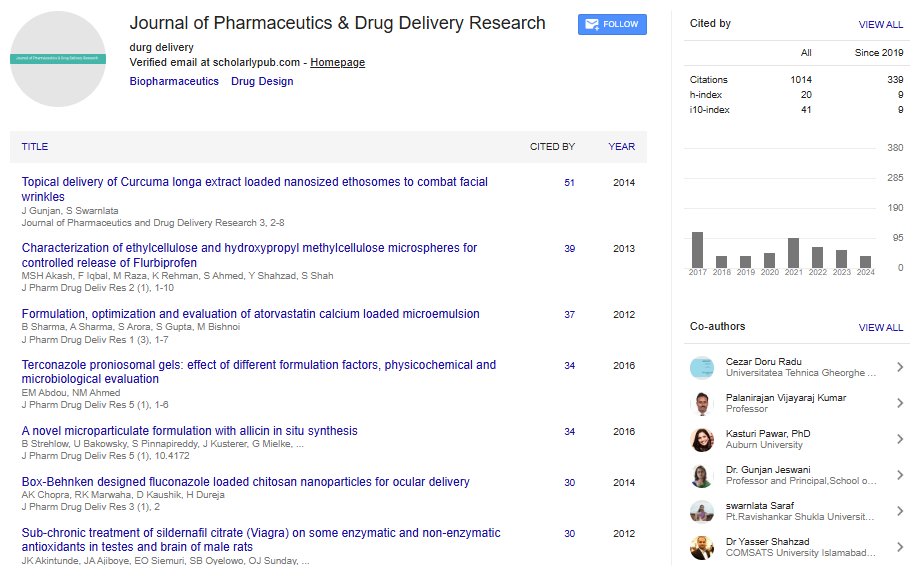Application of mass spectrometry imaging in the diagnosis of difficult melanocytic lesions
Rossitza Lazova
California Skin Institute, USA
: J Pharm Drug Deliv Res
Abstract
In a previous study, we identified differences on a proteomic level between Spitz Nevus (SN), a type of benign mole, and Spitzoid Melanoma (SM), melanoma that histologically mimics SN. Five peptides, comprising a specific proteomic signature, were differentially expressed by the melanocytic component of SN and SM in formalin-fixed, paraffin-embedded tissue samples. We sought to determine whether Mass Spectrometry Imaging (MSI) could assist in the diagnosis and risk stratification of Atypical Spitzoid Neoplasms (ASN), lesions that show histologic features of both, benign SN and SM, and for which a definitive diagnosis of benign or malignant cannot be made with absolute certainty. We performed MSI in a large series of cases of ASNs with known clinical follow-up. In each case, we compared the diagnosis rendered by MSI with the histopathologic diagnosis and also correlated the diagnoses with clinical outcome. Patients were divided into 4 clinical groups representing ‘best to worst clinical behavior’. The association among MSI findings, histopathologic diagnoses, and clinical groups was assessed. When analyzing ASNs, for which neither melanoma nor nevus was favored histopathologically, MSI appeared to be more accurate in predicting the benign character of ASNs than histopathology and correlated better with their clinical behavior. Histopathology often over-diagnosed either atypical features or malignancy. We found a strong association between the diagnosis of SM by MSI and an adverse clinical outcome when clinical group 1 (no recurrence or metastasis beyond a sentinel node) was compared with groups 2, 3, and 4 (recurrence of disease, metastases or death). In addition, the diagnosis of SM by MSI was statistically strongly associated with adverse clinical behavior. MSI analysis using a proteomic signature may be able to provide more reliable diagnosis and clinically useful and statistically significant risk assessment of ASNs, beyond the information provided by histology and other ancillary techniques.
Biography
Rossitza Lazova was trained in Dermatopathology with Dr. A Bernard Ackerman. She was an Associate-Professor of Dermatology and Pathology and Director of the Dermatopathology Fellowship at the Department of Dermatology at Yale University for 20 years. Currently, she is the Director of Dermatopathology at the California Skin Institute in San Jose, USA. Her main interests are melanocytic lesions and particularly Spitzoid neoplasms and melanoma. She founded the Yale Spitzoid Neoplasm Repository and introduced Mass Spectrometry Imaging as an ancillary method in the diagnosis of difficult melanocytic lesions. She has directed numerous sessions at national and international meetings in the US and throughout the world and has given hundreds of presentations worldwide. She has over one hundred publications including two textbooks and numerous chapters. She is on the editorial board of many reputable scientific journals. She served as Vice President of the International Society of Dermatopathology.
Email: drlazova@caskin.com
 Spanish
Spanish  Chinese
Chinese  Russian
Russian  German
German  French
French  Japanese
Japanese  Portuguese
Portuguese  Hindi
Hindi 
